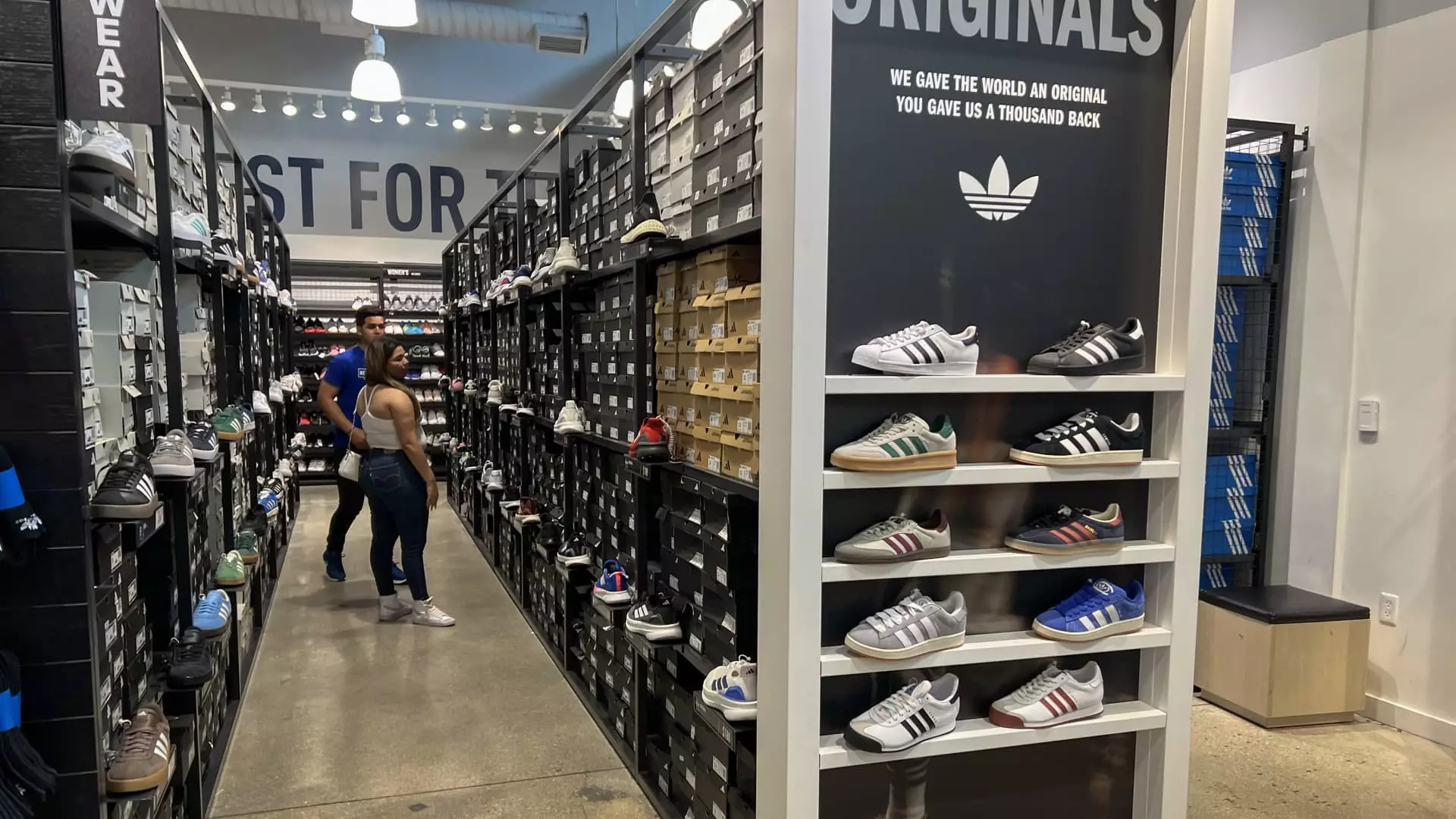In today’s complex economic landscape, protective tariffs can feel like a double-edged sword—intended to shield domestic industries but often backfiring spectacularly. A stark example of this phenomenon has been relayed by Adidas, one of the world’s leading sportswear corporations, which recently articulated the ominous specter of increased prices for its U.S. products due to American tariffs under President Donald Trump. Essentially, this situation not only signals a disconcerting trend for consumers but also poses an existential threat to global businesses relying on intricate supply chains. Here, Adidas serves as a crucial barometer for the broader retail sector navigating the stormy waters of international trade.
A Brand Under Pressure
Adidas is grappling with an unavoidable reality: tariffs can severely inflate costs. The company has acknowledged the uncertainty around how much prices will actually rise, stating, “we cannot make any ‘final’ decisions on what to do.” This hesitance epitomizes the calculated risks and strategizing that businesses are forced to engage in amidst an unpredictable trade war. Given that Adidas primarily operates through outsourced manufacturing, primarily in Southeast Asia, the imposition of tariffs acts like a chokehold, adversely affecting not only Adidas but the entire landscape of consumer goods. Retailers from ultralow-cost competitors to luxury brands are all caught in the crossfire of escalating tariffs and market uncertainty.
The Financial Ripple Effect
Adidas reported a staggering 155% spike in net income for the first quarter, reaching €436 million, and yet, despite this financial boon, the company has refrained from boosting its overall forecasts due to the looming tariff crisis. The firm enjoys a “strong order book and positive brand sentiment,” yet, the uncertainty stemming from tariffs paints a different picture. It raises an essential question—can a thriving brand maintain its momentum when its very foundation is threatened by political decisions? This situation underscores that even in times of profitability, external factors such as government policy can wreak havoc, affecting consumer demand and company strategy.
The Illusion of Control
Adidas has taken proactive measures to reduce its exposure to these tariffs, optimizing its supply chain by minimizing the export of products manufactured in China. However, the escalating tariffs impact from countries beyond China serve as an ever-looming threat. The company’s management must face the relentless complexity of global trade negotiations, which, according to Adidas, renders any predictions “impossible to quantify.” This signals a breakdown of control that companies like Adidas find themselves grappling with—a distortion between rising operational costs and uncertain consumer response.
Brand Resilience Amidst Disruption
What sets Adidas apart in this quagmire is its enduring brand resonance, a trait summed up by analysts stating it delivers a “good print with the company making progress across all areas.” Amidst a backdrop of ambiguity, Adidas is still experiencing double-digit sales growth across multiple channels, which is commendable. The brand has recently distanced itself from publicly controversial partnerships, such as those with music artist Ye, allowing it to rebuild its image and engage a broader consumer base. While the balance of adapting to global economic pressures weighs heavily, Adidas’s persistent return to profitability coupled with strategic pricing may well mitigate some of the potential fallout from tariffs.
A Consumer Paradox
The real victim in this unfolding narrative could very well be the consumer. As Adidas prepares for inevitable price increases due to tariffs, consumers are left to grapple with the paradox of wanting high-quality athletic wear while potentially lacking the financial means to afford it. Higher prices may directly translate to decreased consumer demand, disrupting sales volumes and impacting the working dynamics between supply, demand, and consumer behavior. This cycle highlights a tragic irony—government efforts to protect local industries could inadvertently harm them by discouraging consumer spending.
Ultimately, the situation Adidas finds itself in serves as a transparent window into the broader consequences of protectionist policies. Rather than cultivating a thriving business environment, tariffs impose constraints and uncertainties that can suffocate brands ranging from the humble to the iconic. With these dynamics at play, the future of not just Adidas, but the entire retail sector hangs in the balance, urging us to critically reflect on the intricate relationship between politics and commerce.


Leave a Reply